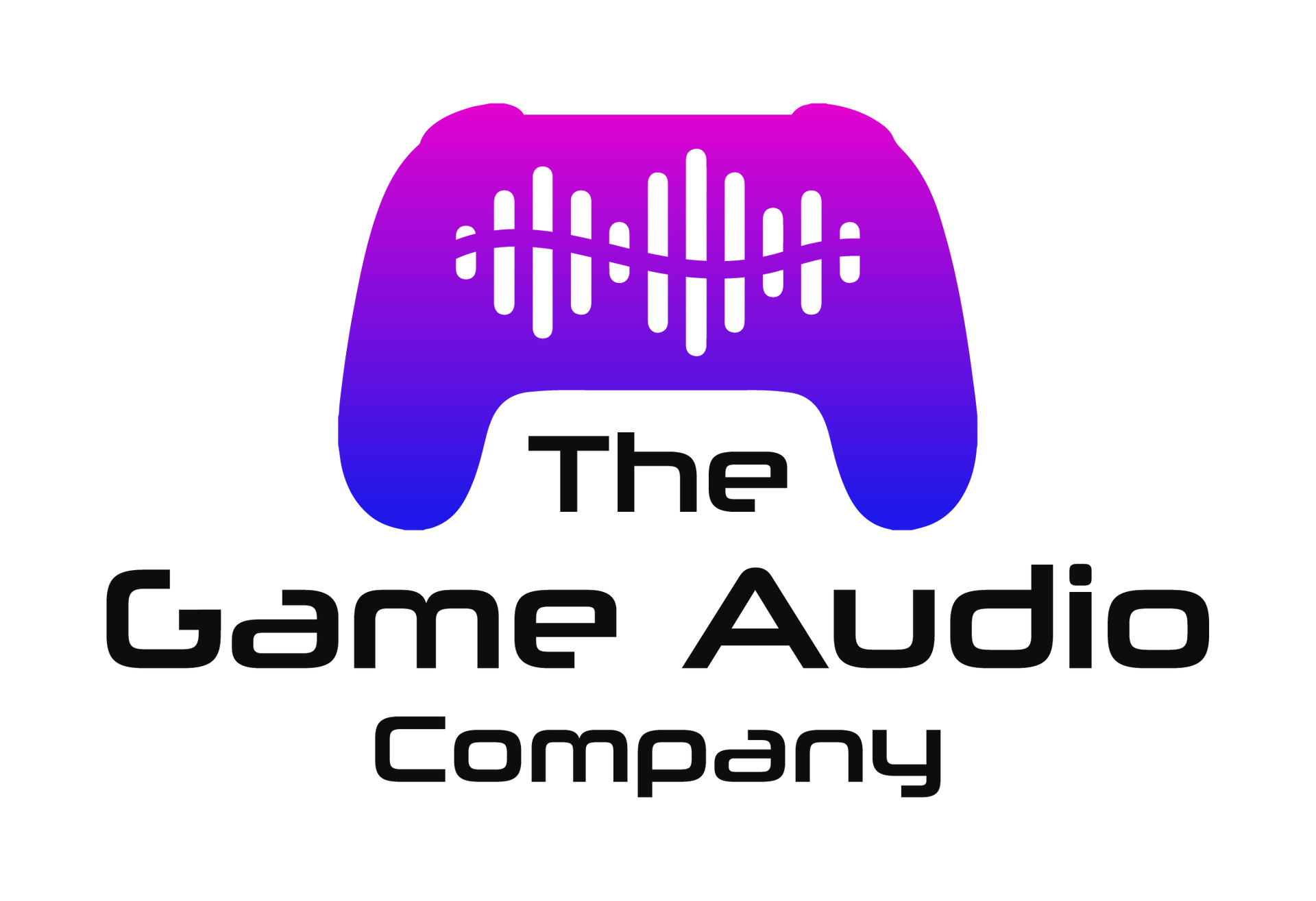Game Audio Blog
Game Audio Middleware: What is it and Why Should You Use it?
In today’s gaming industry, audio plays a crucial role in shaping the player experience. Whether it's the booming footsteps of a giant creature approaching from the distance, or the subtle shift in ambiance when the weather changes in-game, high-quality sound design can immerse players like never before. However, integrating complex audio systems directly into game engines can be cumbersome. This is where game audio middleware comes into play. But what exactly is it, and why should developers and sound designers use it? In this blog post, we'll dive deep into what game audio middleware is, its advantages, and how it revolutionizes the process of audio implementation in games.
What is Game Audio Middleware?
Game audio middleware is a specialized software layer that bridges the gap between game engines (like Unity or Unreal Engine) and audio assets. Essentially, it acts as a toolkit that allows sound designers and composers to implement and control audio behavior directly, without needing to write extensive code in the game engine itself.
Some of the most popular game audio middleware tools include Wwise by Audiokinetic, FMOD, and Fabric. These tools provide user-friendly interfaces and advanced features such as real-time parameter control, spatial audio, adaptive soundscapes, and interactive music systems. Instead of relying heavily on programmers to hard-code audio logic, middleware empowers sound professionals to handle much of the audio implementation independently.
Key Features of Game Audio Middleware
Game audio middleware offers several essential features that help streamline audio implementation, including:
1. Adaptive Audio
Middleware allows sound designers to create adaptive audio that can change dynamically based on in-game events or player actions. For example, background music can shift seamlessly from calm to intense as an enemy approaches.
2. Real-Time Parameter Control
With tools like FMOD and Wwise, you can tie game variables (such as player health or speed) directly to audio parameters. For example, you can increase the tempo of background music as the player’s health decreases, building tension.
3. 3D Spatial Audio and Ambisonics
Modern game audio middleware supports spatial audio, making sounds feel like they originate from specific locations in 3D space. This creates a realistic experience where players can hear sounds coming from all around them, including above or below, contributing to immersion.
4. Interactive Music Systems
Middleware tools let composers create interactive scores that evolve in response to gameplay. Instead of a single looping track, the music can shift between various layers depending on what’s happening in the game. This flexibility makes the music feel alive and connected to the player’s actions.
5. Efficient Audio Resource Management
Middleware helps optimize audio resources by allowing designers to use triggers, events, and asset streaming, minimizing the impact on game performance. This is particularly important for large games where memory usage is a concern.
Why Should You Use Game Audio Middleware?
Now that we’ve covered the basics, let’s explore why developers and sound designers should seriously consider using game audio middleware in their projects.
1. Empowers Sound Designers and Composers
One of the biggest advantages of using middleware is that it allows audio professionals to take charge of the implementation process. Without middleware, sound designers often have to rely heavily on programmers to integrate and test sounds within the game engine. Middleware eliminates this bottleneck by giving them the tools to make real-time changes and test audio independently.
This freedom fosters a more collaborative workflow between the game development and audio teams. Designers can tweak parameters, fine-tune sound effects, and optimize soundscapes on their own, resulting in faster iterations and more creative control.
2. Reduces the Need for Custom Coding
Integrating complex audio behavior directly into a game engine often requires a significant amount of coding. Middleware reduces this dependency by providing built-in functionality for interactive audio systems, 3D positioning, and music transitions. Developers no longer need to write custom scripts to handle these tasks, saving time and reducing the risk of bugs.
3. Improves Game Performance and Audio Quality
Middleware tools are designed with performance in mind, helping developers optimize audio resources efficiently. For example, they can handle sound asset streaming, ensuring that only the necessary audio files are loaded at any given moment, reducing memory usage. Additionally, middleware provides high-quality sound processing tools, resulting in cleaner audio and smoother transitions.
4. Simplifies Cross-Platform Development
Many middleware solutions support multiple platforms, making it easier to port games to different systems. This feature is especially beneficial for indie developers and small studios that need to release their games on both consoles and mobile devices. Middleware handles platform-specific audio quirks, ensuring that sound behaves consistently across different platforms.
5. Facilitates Complex Audio Systems
Creating complex audio behaviors—such as environmental reverb changes, proximity-based sound effects, or dynamic dialogue systems—can be overwhelming without middleware. With tools like Wwise and FMOD, these features are easier to implement. Designers can quickly set up triggers, events, and real-time audio adjustments through the middleware’s interface, saving time and effort.
Use Cases: How Middleware Enhances Game Development
To understand the impact of game audio middleware, let’s explore a few real-world scenarios where it makes a significant difference.
Scenario 1: Dynamic Ambiance in an Open-World Game
In an open-world game, the environment often shifts between day and night cycles, weather changes, and various biomes. With middleware, sound designers can create layered ambient sounds that change dynamically based on these factors. For example, the soundscape could transition from the bustling sounds of a city to the tranquil ambiance of a forest as the player moves between locations.
Scenario 2: Interactive Music in a Boss Fight
Imagine a boss fight where the music evolves as the player progresses through different phases of the battle. Using middleware, the composer can set up musical cues that trigger automatically as the player defeats each phase, intensifying the experience. Without middleware, implementing such behavior would require custom code and time-consuming testing.
Scenario 3: 3D Audio in a VR Game
In virtual reality (VR) games, spatial audio is essential for immersion. Middleware makes it possible to create realistic 3D soundscapes where players can detect the exact direction of sounds. This enhances the VR experience by making the game world feel more tangible and interactive.
Choosing the Right Middleware for Your Project
Not all middleware tools are the same, and choosing the right one depends on your project’s needs. Here are some factors to consider:
- Ease of Use: FMOD is known for its intuitive interface, making it a popular choice for beginners, while Wwise offers more advanced features for complex projects.
- Integration with Game Engines: Make sure the middleware integrates well with your chosen game engine. Both Wwise and FMOD have solid support for Unity and Unreal Engine.
- Platform Support: Check if the middleware supports the platforms you’re targeting, such as PC, console, or mobile.
- Licensing and Cost: Some middleware solutions are free for indie developers but require a license for larger commercial projects.
Conclusion
Game audio middleware has become an essential tool in modern game development, offering a host of features that simplify audio implementation, enhance creativity, and improve workflow efficiency. By empowering sound designers and composers to take control of audio behaviors, it reduces the need for custom coding and fosters collaboration between teams. Whether you're creating an immersive open-world experience or a tight, narrative-driven game, middleware tools like Wwise and FMOD can help you bring your audio vision to life.
If you’re serious about delivering high-quality audio and creating memorable gaming experiences, investing time in learning and using game audio middleware is well worth the effort. Not only will it save you time, but it will also unlock new creative possibilities, allowing you to craft soundscapes that elevate your game to the next level.


